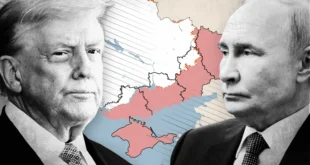The current Iran-Israel conflict has rapidly escalated into a major non-contact kinetic war of attrition. The conflict ignited when Israel preventively struck Iranian military, civil, and nuclear infrastructure using airstrikes, drones, and covert operations. These strikes have resulted in the deaths of Iran’s senior military leaders, including General Mohammad Bagheri (the Chief of the General Staff of the Iranian Armed Forces), General Hossein Salami (Commander-in-Chief of the Islamic Revolutionary Guard Corps), Major General Gholamali Rashid (deputy commander-in-chief of the armed forces), Brig General Amir Ali Hajizadeh (commander of the IRGC’s Aerospace Force), and Brig General Mohammed Kazemi (Head of Intelligence for IRGC). Israel is also target killing key nuclear scientists, and at least 14 nuclear scientists have been killed to date. Currently, Israel is dominating the skies of the Iranian mainland and is conducting precise strikes against Iran’s ballistic missile storage and launch facilities. In retaliation, Iran has launched waves of ballistic missiles against Israel. Despite intercepting roughly 90 percent of Iranian missiles through its multi-layer air defense, several major cities of Israel, including Tel Aviv, Bat Yam, Haifa, Rehovot, Bnei Brak, Petah Tikva, and Tamra, have been hit multiple times by Iranian missiles. As the conflict ignites further, the risks of spillover effects in the maritime domain cannot be ruled out at all.
The narrow strait, which serves as the gateway between the Persian Gulf and the Gulf of Oman, is one of the world’s most critical maritime chokepoints. The strait, 29 nautical miles wide at its narrowest point, is dubbed the ‘world’s most important choke point’ by the U.S. Energy Information Administration (EIA). In the year 2024, on average, 20 million barrels of oil transited through the strait per day, amounting to approximately 30 percent of net global oil trade. Although alternative infrastructure exists in the form of Saudi Arabia’s East-West pipeline to the Red Sea and the UAE’s Abu Dhabi Crude Oil Pipeline to Fujairah, only 4.2 million barrels per day can be transited through these pipelines.
The LNG market is particularly vulnerable to potential disruptions. All LNG shipments from Qatar—the world’s second-largest LNG exporter—and the UAE must transit the Strait of Hormuz. According to the International Energy Agency (IEA), 10.4 billion cubic feet of LNG passed through the Strait per day, accounting for 20% of the global LNG trade. Given the lack of alternative export routes for Qatar and the UAE, any blockage of the strait would significantly strain global supply. Approximately 80 percent of these LNG shipments head to Asia, while about 20 percent go to Europe. In sum, any disruption in the Strait of Hormuz can potentially cause an unsustainable energy crisis in international markets.
Although the strait is currently open for commercial traffic, regional advisory bodies like the UK Maritime Trade Operations (UKMTO) and the Joint Maritime Information Center (JMIC) have issued advisories urging caution amid increasing risks of crisis in the strait. Electronic interferencewith navigation systems of commercial shipping has already been reported, which can cause complications in commercial operations. Freight charges are already skyrocketing. Although the maritime war risk premium remains unchanged for the time being, this situation can also change rapidly.
Historical precedent from the Iran-Iraq War of the 1980s is worth exemplifying. The so-called ‘Tanker War’ saw over 100 commercial ships attacked annually. By 1987, Kuwait sought American naval protection, leading to Operation Earnest Will, where U.S. naval escorts shepherded reflagged Kuwaiti tankers through the Gulf. That effort culminated in Operation Praying Mantis, the largest U.S. naval engagement since World War II, which saw direct action against Iranian naval vessels. Today, Bab-el-Mandeb, another crucial choke point connecting the Red Sea with the Indian Ocean, is already vulnerable to the Houthis’ missile and drone attacks. The United States, with its Operation Prosperity Guardian, and the European Union, with its Operation Aspides, have attempted to safeguard commercial shipping in the Red Sea. However, such large operations have significant financial costs and are not sustainable in the long run. Under current circumstances, a blockade of the Strait of Hormuz can exacerbate the situation even further.
The Iran-Israel conflict is yet to escalate in the maritime domain. In the recent past, Tehran has used the threat of blocking the Strait of Hormuz multiple times to deter potential aggression by the United States. This Iranian threat is not merely rhetorical, as the Iranian Navy and IRGC Navyhave the capability to impose a blockade in the strait using asymmetric means like swarming with small, fast attack crafts equipped with cruise missiles and rockets, drones, naval mines, and coastal batteries of cruise and ballistic missiles of varying capabilities. In addition, Iranian naval forces also operate several frigates, corvettes, and submarines, which are also tasked to complement blockade efforts. Further compounding maritime risk is the presence of Iran’s two drone carriers—Shahed Bagheri and Shahed Madabi. These converted commercial vessels are capable of launching large drones, missiles, and helicopters, and thus also represent a significant strike capability for Iran at sea. Although the U.S. Fifth Fleet is based in Bahrain, which, along with allied naval assets, is positioned to respond against such blockade measures, any direct military engagement risks further escalating the conflict into a regional war.
The potential maritime fallout of an Iran-Israel conflict poses serious risks to regional and global stability. But the Iran-Israel conflict cannot be viewed in isolation. Due to Israel’s growing aggression in its neighborhood and the collapsing Iran-led ‘axis of resistance,’ the Middle East is now facing a highly volatile environment like never before. With Iran’s senior leadership eliminated, a highly provocative aerial campaign by Israel to forcefully denuclearize Iran, and continuous missile barrages by Iran against Israel, there is limited room left to exercise restraint and undertake confidence-building measures (CBMs). But if the conflict is not contained and is allowed to escalate to the maritime domain, then it will yield involvement of other powers, leading to global ramifications.
 Geostrategic Media Political Commentary, Analysis, Security, Defense
Geostrategic Media Political Commentary, Analysis, Security, Defense





